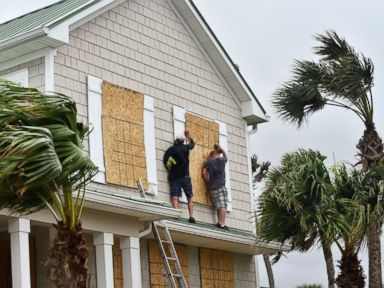
Hurricane Matthew, blamed for more than 100 deaths in the Caribbean, appears to be taking aim at the southern U.S. Atlantic coast, with a potential landfall early Friday morning in Florida and deteriorating conditions expected before then.
Government officials and forecasters have issued dire statements about the Category 4 hurricane, saying that “this storm will kill you” and warning of extreme winds and flooding that could leave areas uninhabitable for weeks. Evacuations have been ordered for nearly 2 million people — the largest storm evacuation since Hurricane Sandy hit the East Coast in 2012.
“Residents and visitors should take evacuation orders seriously and heed the directions of state, local and tribal officials,” said Craig Fugate, the administrator of the Federal Emergency Management Agency, in a statement. “This is a major hurricane that has the potential to cause significant harm to life and property.”
For residents who are in the path of Matthew, here is how experts say you might be able to protect yourself and your property.
Prepare Your Home
Officials recommend boarding up windows and doors and securely locking any hurricane shutters on your property. FEMA says Hurricane Matthew has potential for “life-threatening rain, wind and storm surge,” and the agency recommends that those living in potentially affected areas “have a communications plan” and “keep a battery-powered radio handy.”
FEMA also recommends homeowners unplug electronic equipment — including computers, televisions and wireless routers — and move them to a safe place, if possible. Even if households have surge protectors, lightning strikes could be hazardous.
The agency says you should shut off electrical service at the main breaker if there is the potential for flooding in your area.
Officials recommend rolling up area rugs and storing them on higher floors to reduce the chance of mold and moving patio furniture and outside appliances to protected areas to keep them from being blown away.
They say to prepare an emergency supply kit, and the American Red Cross advises to stock up on nonperishable food items and drinking water in your home.
Insurance Coverage
If you have hurricane insurance or special riders, wind and water damage may be covered. This could include expenses incurred from home repairs, property damaged during the storm and the cost of debris removal.
But flood insurance might also be required in some cases. Some hurricane insurance policies don’t cover additional expenses for water and flood damage, so it’s important to communicate with your insurance agent to discuss your plan, according to FEMA and the Insurance Information Institute.
“Call your insurance agent to discuss your coverage and learn more,” FEMA says. “If you incur expenses due to protecting your home in preparation for coming storms and flooding — such as purchasing sandbags — you may be able to file a claim against your National Flood Insurance Program flood policy for reimbursement.”
In order to make furniture insurance claims, preparing a list of property is recommended, which can be done by taking pictures or video with a smartphone.
If you own a home in a hurricane-prone region, it is critical to know the parts of your home that fall under home insurance.
Officials recommend using a safe to preserve any documents — including property titles and birth certificates — and valuables such as jewelry and family photos that are not water- and fireproof.
